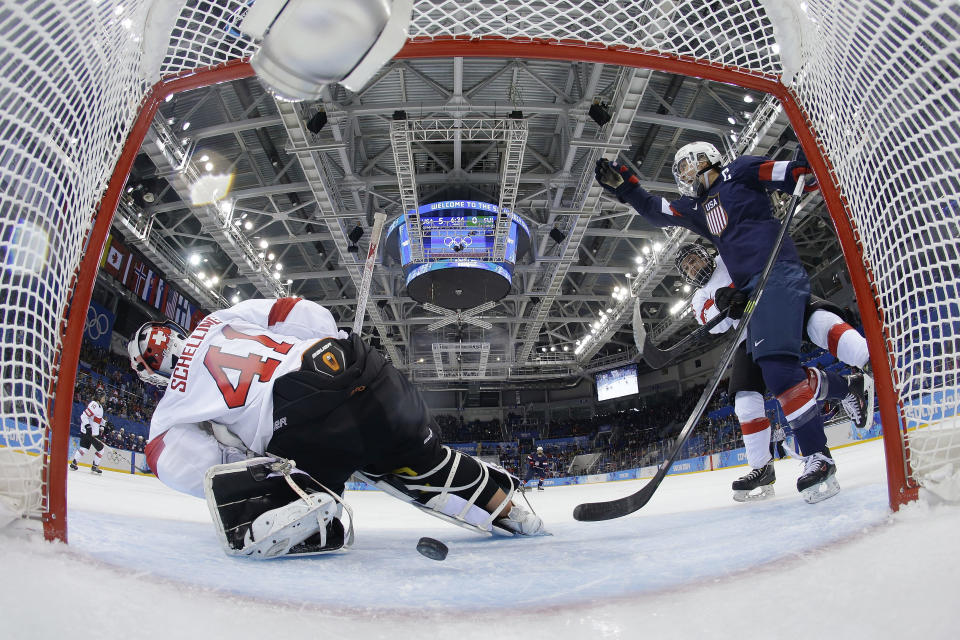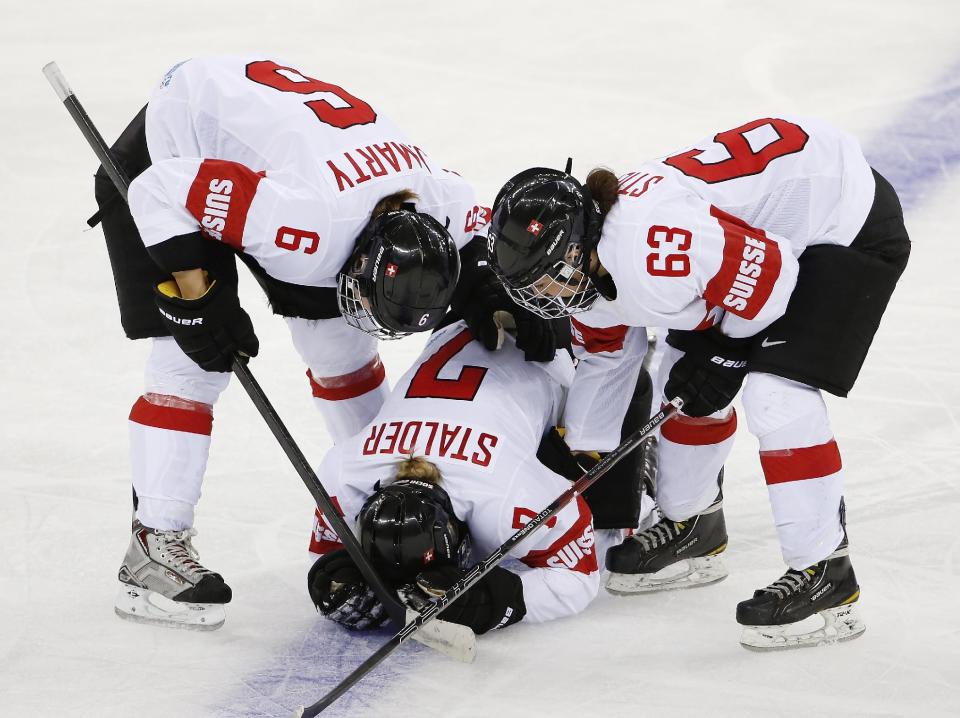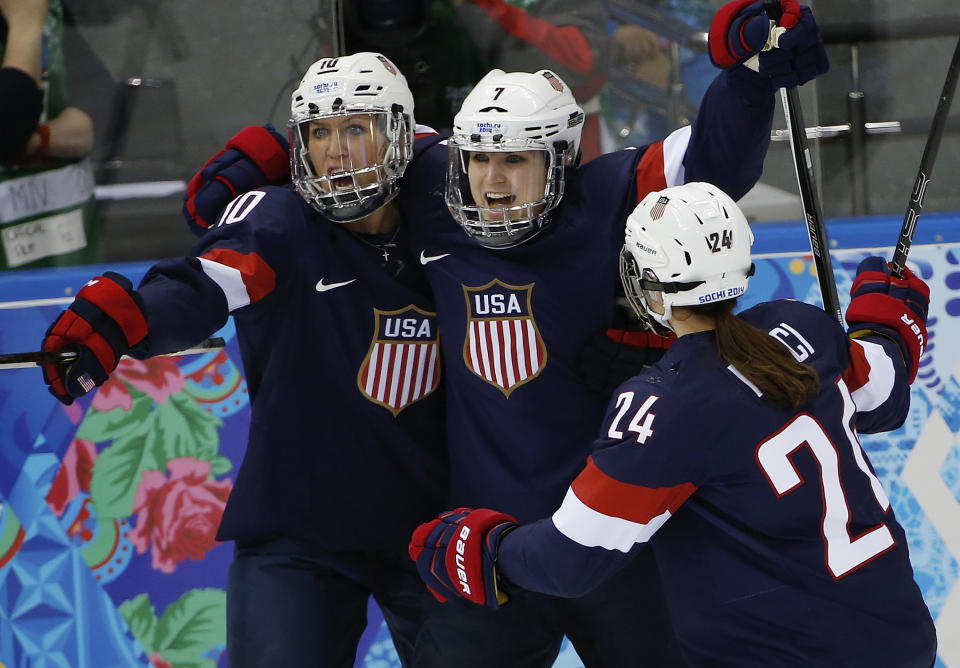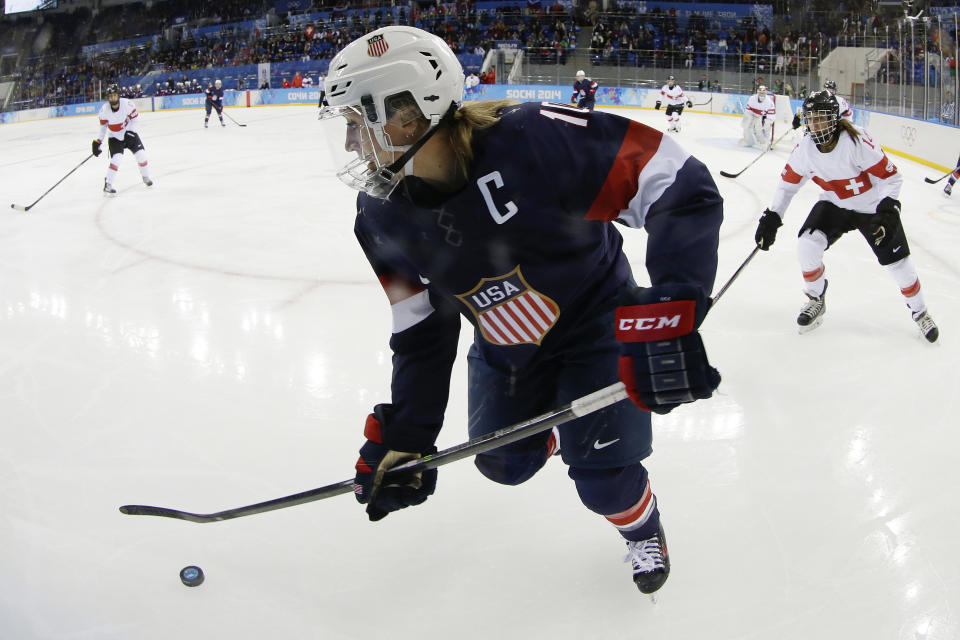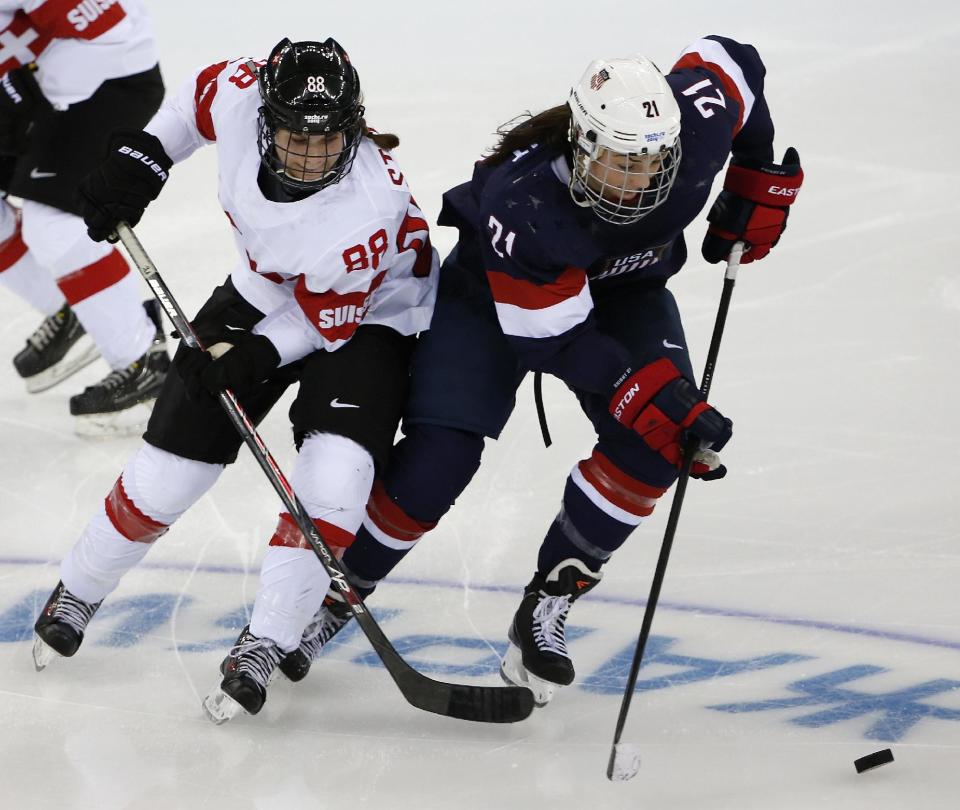Column: Women's hockey follows familiar script
SOCHI, Russia (AP) — The announcer in the Shayba Arena was trying to pump up the crowd between periods of yet another Olympic women's hockey mismatch, though her heart didn't really seem to be in it.
"It's 5-0," she yelled in a voice that echoed across the ice. "But you never know what is going to happen."
Actually, in women's hockey you usually do. The script is a familiar one for anyone who has watched the sport, and nobody is going to deviate from it at the Olympics.
The two most powerful teams in the sport will beat everyone put in front of them. Most of those games — save for the ones in this Olympics against Finland — will be lopsided routs, the outcome determined from the moment the teams take center ice.
And the U.S. and Canada will play for Olympic gold.
Nearly two decades after women's hockey made its Olympic debut in Nagano, the sport remains stuck in a rut. The names of the countries that fill up the eight-team tournament differ slightly every four years, but the ones at the top never seem to change.
The only drama Monday when the U.S. played Switzerland came late in the game, and that was only because the Americans came close to scoring in double digits in a 9-0 win. The only reason it was that close was that the Swiss have a goalie who played at Northeastern and has a knack for gobbling up the puck.
A few nights earlier, goalie Florence Schelling raised her arms in triumph as she left the ice, savoring the only kind of victory the Swiss were going to get against Canada — a moral one. Canada won 5-0, but Schelling sparkled in goal, stopping another 64 shots the Canadians threw her way.
"Without her it's maybe 15-0," said Canada's Hayley Wickenheiser, who goes back to the 1998 Winter Games in Nagano and is the all-time leading Olympic goal scorer with 17.
Asked afterward what his team wanted to do against the United States, Switzerland coach Rene Kammerer had lowered expectations.
"Against the U.S. we want to score," he said.
That didn't happen; in fact the Swiss never came close to sniffing a goal. Even when Switzerland had an advantage on a power play in the second period, the U.S. mostly controlled the puck while playing four against five.
Little wonder that former IOC President Jacques Rogge warned after the debacle that was women's hockey four years ago in Vancouver that "We cannot continue without improvement."
The only surprise in Vancouver came after Canada beat the U.S. 2-0 for the gold medal and the Canadians came back on the ice afterward to guzzle beer, swig from bottles of champagne and smoke victory cigars.
It was Canada against the U.S., of course, because it always is Canada against the U.S when it really matters. The two countries have won all four golds, three silvers and a bronze at the Olympics, and no other nation has ever made the title game in the world championships.
That kind of dominance is what made the IOC get rid of baseball and softball in the Summer Olympics. But in the Winter Games the teams help pad the number of female Olympians, who still trail males by a large margin.
Take away 168 hockey players and there would be only 990 female athletes in Sochi compared to 1,712 men.
Just why the U.S. and Canada are so much better than other teams is simple to explain. They train year around, play together year around, and come from countries where hockey is part of the sports culture. A handful of other countries throw teams together for tournaments, but often it's like putting a small college football team in against the Seattle Seahawks.
"People need to be patient," U.S. coach Katey Stone said. "There have been tremendous strides made in the sport of women's ice hockey. And I think we should talk less about what if the gap is big versus how are we going to continue to close the gap because I think it's closing."
In the case of one country, it just might be. Finland has been competitive so far in Sochi, losing to the U.S. 3-1 in their opening game and giving Canada a bit of a game Monday, losing 3-0 though being badly outshot. Finland was put in the same bracket as the U.S. and Canada while most of the weaker teams were put in the opposite bracket in an effort to limit blowouts.
Still, games like that give other countries some hope they might one day catch up, and gives those who love the game and believe that it can be every bit as entertaining and competitive as the men's tournament some ammunition to make their case.
Their hope it won't be long before the Shayba Arena announcer will be right: When the women's teams meet you never really know what will happen.
____=
Tim Dahlberg is a national sports columnist for The Associated Press. Write to him at tdahlberg@ap.org or http://twitter.com/timdahlberg
